Redefining Marketing Measurement: Highlights from the 2025 ANA Measurement & Analytics Conference in Chicago (Part 2)
🔙 Missed the beginning? Start with Part 1→ Highlights from the 2025 ANA Measurement & Analytics Conference in Chicago (Part 1)
- Session Highlight③: HP — Tackling the Data Quality Crisis
- Session Highlight④: Bayer & Incremental — Redefining Measurement in Retail Media
- Exhibition Highlight: MMM Companies Shaping the Future of Measurement
- Closing
Session Highlight③: HP — Tackling the Data Quality Crisis
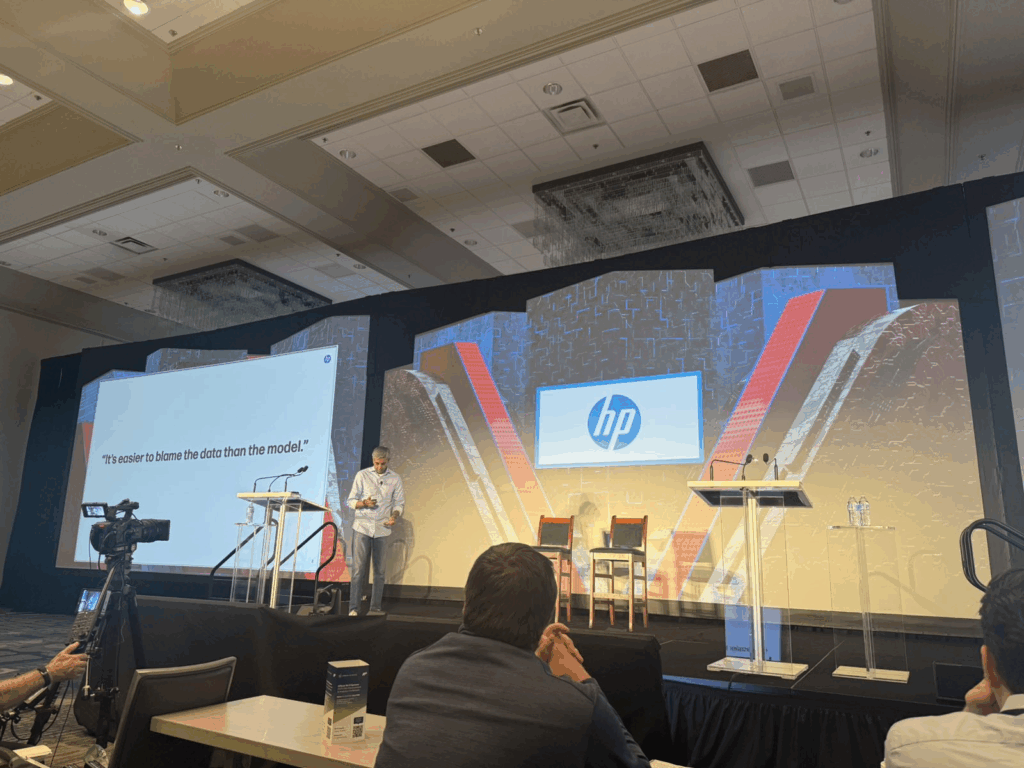
(Pictured on is Head of Marketing Data Science, HP Kumar Rahm)
In this session, Kumar Rahm, Head of Marketing Data Science at HP, addressed what he called the industry’s most pressing issue: the data quality crisis. Citing a survey, he noted that only 47% of marketers and analysts say they fully trust their data—a figure he found “shockingly high,” given how often practitioners encounter errors.
Rahm explained that poor data quality had become a political as well as a technical problem inside HP. Marketing dashboards and CMO scorecards often relied on inconsistent numbers. As he put it:
“If I’m putting a metric in front of a CMO, I need to be absolutely sure the number is right. Historically, that was a bit of a crapshoot.”
HP faced enormous fragmentation—22 separate databases in 2018, with finance, sales, and marketing data scattered across platforms. Data scientists were spending one-third of their time cleaning datasets instead of building models. Data quality engineers, meanwhile, were stuck in firefighting mode, fixing broken pipelines or reconciling errors.
To address this, HP consolidated those 22 databases into just three, moving to a lakehouse architecture (a modern hybrid of data lake and warehouse). This enabled shared access across marketing, finance, and sales teams. They also deployed new approaches like harmonization (standardizing data from multiple sources) and anomaly detection (flagging suspicious variances in KPIs such as cost-per-click or impressions).
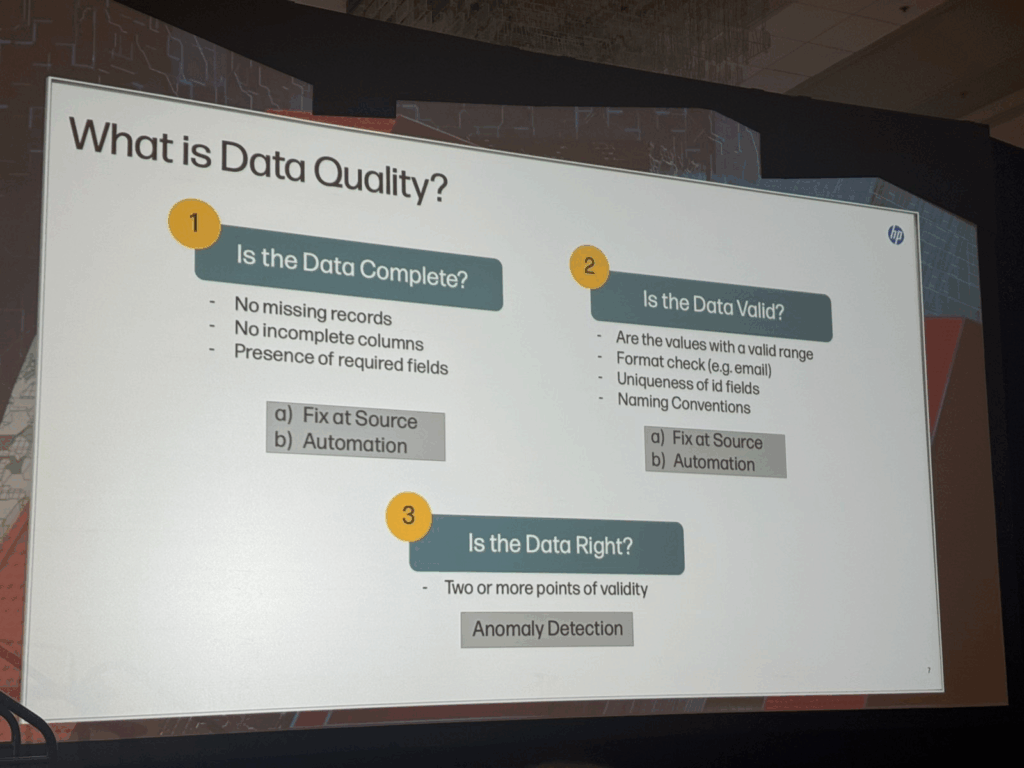
The results were significant. Rahm explained that data scientists now spend less than 10% of their time on data cleaning—down from one-third previously—with a target of just 5%.
More importantly, the cultural framing of data quality shifted. It was no longer “just an IT problem” but a shared responsibility across marketing, finance, and operations. Teams began asking not only whether data was complete or valid, but also: “Do we know if the data is right?”
Rahm emphasized that this question is central to marketing accountability. If a report shows $60,000 in Google Search spend last week, can the organization be confident that it isn’t really $65,000 or $70,000? Without that certainty, every downstream model—whether ROI measurement or budget allocation—loses credibility.
He concluded by positioning data quality as the hidden backbone of modern measurement:
“It’s not just about completeness or validity. The hardest question is: do we know if the data is right?”
Session Highlight④: Bayer & Incremental — Redefining Measurement in Retail Media

(From left: Incremental’s CEO David Pollet ,Bayer Consumer Health’s Director of Ecommerce Sales Angela Fenwick)
In this session, Angela Fenwick, Director of Ecommerce Sales at Bayer Consumer Health, joined forces with David Pollet, CEO of Incremental, to address one of the fastest-growing yet most complex areas of marketing today: retail media.
Fenwick began by noting how retail media differs fundamentally from traditional advertising. On platforms like Amazon or Walmart, advertising and commerce are deeply intertwined: prices, shipping options, and promotions appear directly alongside ads, making it difficult to separate “content” from “media.” This, she argued, creates both opportunities and serious measurement challenges.
Pollet expanded on this, critiquing the industry’s over-reliance on ROAS (Return on Ad Spend), which is often driven by proxy metrics like clicks or branded searches. As he put it, high ROAS from brand terms may not indicate true incremental value:
“Your best ROAS often comes from branded searches you would have gotten anyway. That’s not incremental.”
The joint Bayer–Incremental project set two objectives:
1.Get more from existing budgets — aiming for +10% sales growth without additional spend.
2.Make measurement simple and automated — reducing reporting lags and enabling scalable application across multiple brands and retailers.
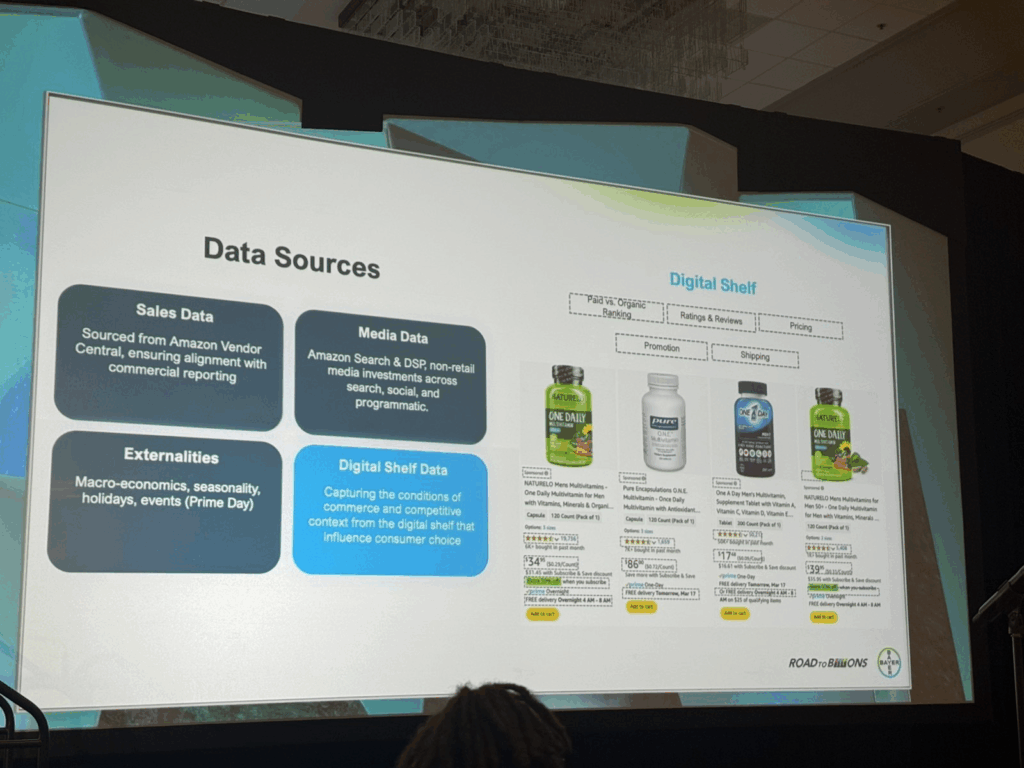
To achieve this, they implemented Incremental’s incrementality scoring system directly into retail media platforms, supported by data integration from partners such as Skai. This allowed real-time feedback loops where media investments were continuously optimized against incremental outcomes, not just attributed clicks.
The results exceeded expectations. Bayer achieved a +32% sales lift with flat budgets, driven by over 1,000 daily optimizations across campaigns . More importantly, the model proved scalable: after initial pilots on two brands, it was expanded to 10 brands and three major retail partners.
Fenwick emphasized the cultural impact within Bayer: retail media was no longer seen as just a “distribution channel” but as a strategic investment tied directly to growth. Pollet added that true accountability requires neutral, transparent measurement providers who can feed incrementality signals directly into activation systems:
“We don’t think measurement is an answer — it’s a signal.”
Together, their session highlighted how retail media—growing three times faster than search and twice as fast as social—requires moving beyond outdated ROAS metrics to causality-based, real-time optimization.
Exhibition Highlight: MMM Companies Shaping the Future of Measurement
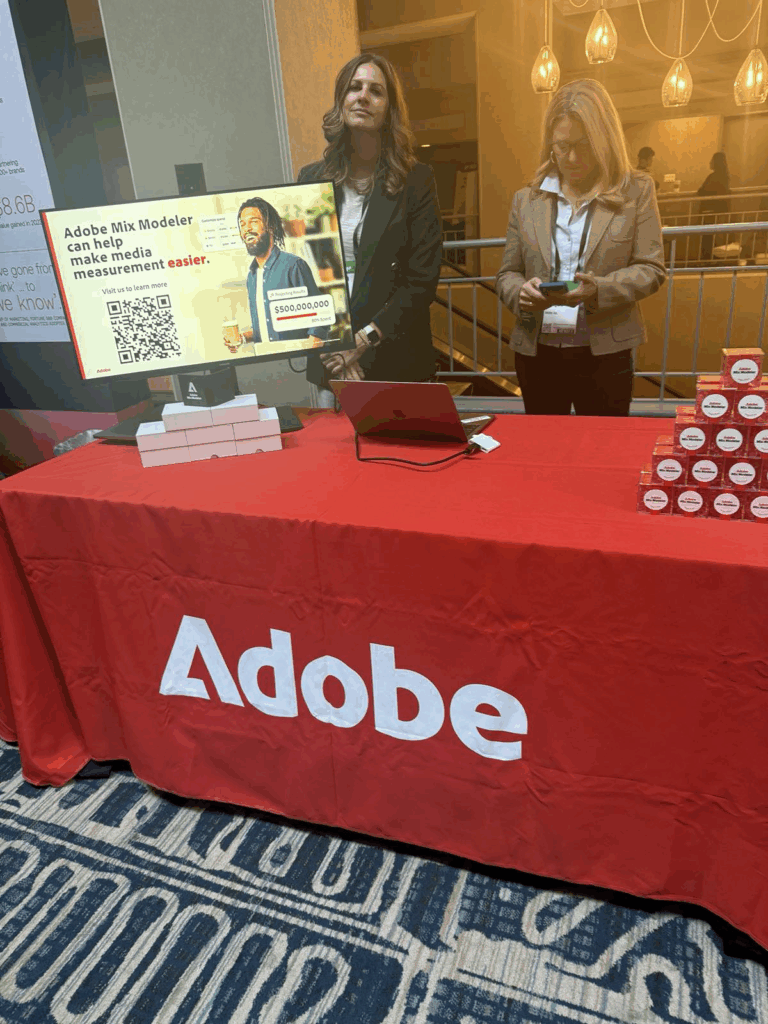
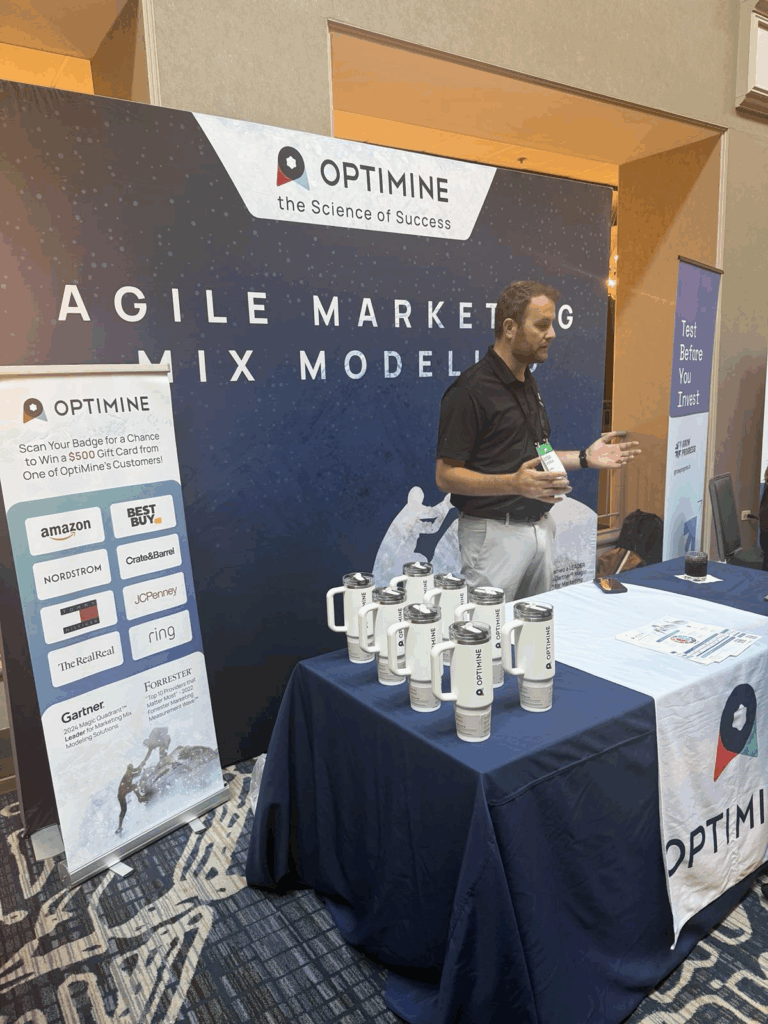
On the exhibition floor, several companies stood out for their focus on Marketing Mix Modeling (MMM)—a method that aggregates data across channels to measure the true impact of marketing investments. While MMM has been around for decades, its importance has surged in the U.S. as privacy regulations restrict cookie-based tracking. What was once considered a “classic” approach is now the mainstream foundation of measurement.
Equally important, this year’s exhibitors showcased how they are layering AI and advanced analytics onto MMM to make it faster, predictive, and actionable. Below are five notable companies that illustrated this shift:
Adobe demonstrated how MMM can be embedded within its broader analytics and Experience Cloud ecosystem. By connecting measurement directly to activation, Adobe helps brands close the loop between insight and execution, ensuring that media planning is tied to actual business outcomes.
Analytic Partners emphasized “commercial intelligence.” Their MMM solutions are not only about retrospective measurement but also about scenario planning—helping companies simulate future investment decisions and understand trade-offs before budgets are committed.
Ekimetrics showcased its expertise in AI-driven data science, using MMM as a foundation for predictive simulations. Their approach allows brands to test “what if” scenarios across multiple channels, ensuring marketing plans remain resilient under uncertainty.
iSpot.tv highlighted its specialization in TV and video analytics. By integrating MMM with real-time performance tracking across linear and streaming platforms, iSpot showed how advertisers can connect brand exposure to business results in a rapidly fragmenting media landscape.
Optimine focused on speed and agility. Unlike traditional MMM, which is often slow and updated quarterly, Optimine pitched its always-on model that provides near real-time insights. This makes it possible for marketers to adjust budgets dynamically in fast-moving environments.
Together, these exhibitors made a strong statement: measurement is no longer a static, backward-looking exercise. By combining MMM with AI, simulation, and always-on feedback loops, companies are transforming it into a living system that guides decision-making and builds credibility with finance teams.
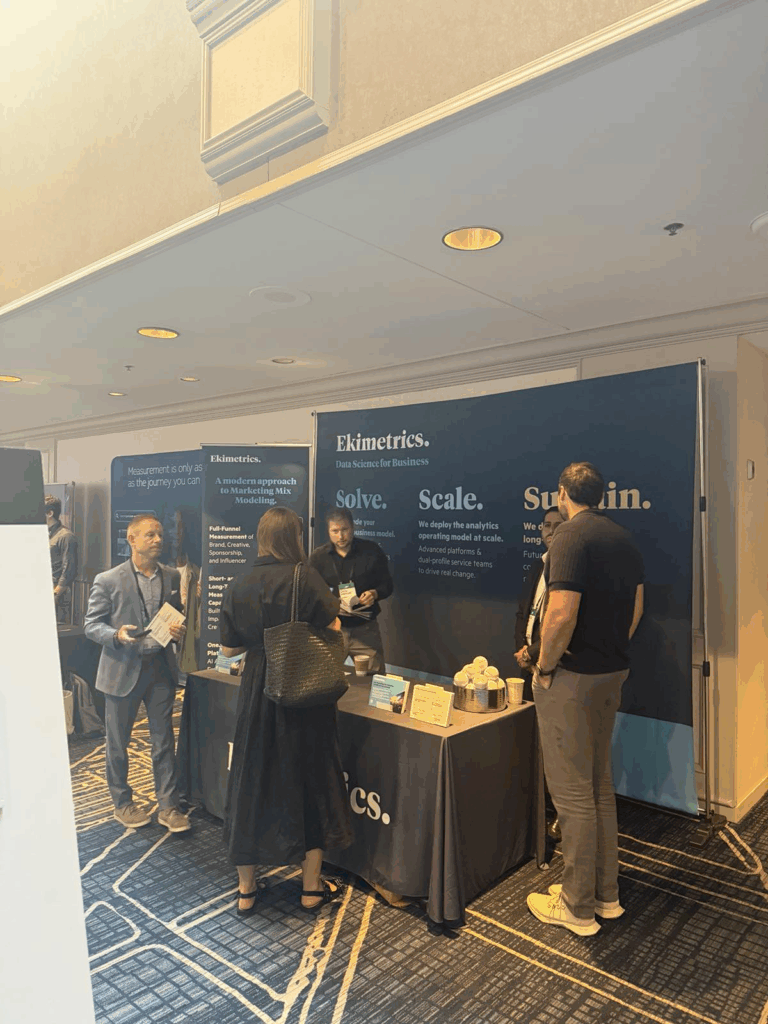
Closing
Attending the 2025 ANA Measurement & Analytics Conference was an inspiring and eye-opening experience. The event offered an unparalleled look into how measurement is evolving from a reporting function into the very backbone of marketing accountability.
Across the sessions, a consistent message emerged: proving ROI is no longer optional—it is the language CFOs demand and the foundation on which marketing credibility rests. Whether it was Google highlighting the “Measurement Trifecta,” LinkedIn building causal bridges from awareness to sales, HP tackling the data quality crisis, or Bayer and Incremental redefining retail media metrics, each session reinforced the same truth: measurement must connect directly to business outcomes.
Equally important was the conversation around data. Clean, reliable, and harmonized data was described again and again as the fuel for AI, analytics, and decision-making. Without it, even the most advanced models cannot be trusted. This strongly resonated with the work we do as a consulting partner: helping organizations build solid data foundations to support AI adoption and marketing innovation.
Beyond the main stage, the exhibition floor showcased the next wave of measurement providers. Companies like Adobe, Analytic Partners, Ekimetrics, iSpot.tv, and Optimine demonstrated how MMM, enhanced with AI and real-time optimization, is becoming mainstream in the U.S. These innovations showed the momentum toward privacy-safe, predictive, and actionable measurement.
Lastly, the atmosphere of the conference itself—full sessions, energetic networking, and immersive booth experiences—brought a unique vitality to the three days in Chicago. It was the perfect environment to exchange ideas, discover new approaches, and see firsthand how the future of measurement is being built right now.


